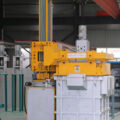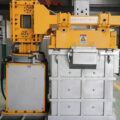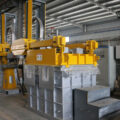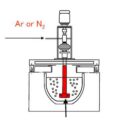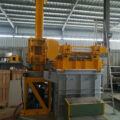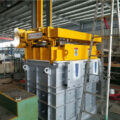The molten aluminum degasser can achieve the purpose of purifying aluminum alloy. The degassing device can meet the high technical performance requirements of producing aluminum alloy. The aluminum degasser is located between the furnace and the casting machine. Its main function is to remove hydrogen and other residues. It can reduce the porosity of castings.
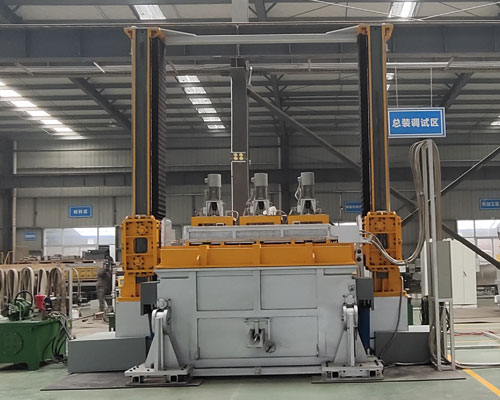
For a long time, porosity has been one of the main casting defects that affect the mechanical properties of castings, especially the fatigue properties. The formation of pores is due to the volume shrinkage from liquid to solid during the solidification process, and in particular due to the significantly reduced solubility of gases in solids compared to solid metals, as a result of the release of dissolved gases. Hydrogen is the only gas soluble in molten aluminum. Therefore, reducing or eliminating the dissolved hydrogen in molten aluminum contributes to the production of high-quality castings.
At present, most aluminum plants use molten aluminum degasser to reduce the inclusions and hydrogen content in liquid aluminum. The processing principle of on-line degassing equipment is the principle of gas flotation. The process gas (inert gas or a mixture of inert gas and chlorine) is injected into the melt through the rotor and broken into uniformly dispersed tiny bubbles by the rotor, and the tiny bubbles rise to the melt On the surface, the degassing work is completed when the tiny bubbles rise. Hydrogen is absorbed into the bubbles and is eliminated. Alkali metals are eliminated by chemical interaction with chlorine gas (chloride formation). The inclusions are trapped by bubbles and then rise to the surface of the melt to form dross.
The degassing device can use a mixture of argon, nitrogen and chlorine as an option, and is designed with protection measures that can safely use argon and chlorine. The degassing efficiency is stable at 60% on average. The sealing structure of the on-line degassing equipment is designed to fully seal the box cover, the box body, and the aluminum melt port, which effectively prevents the slagging caused by the secondary oxidation of the aluminum melt and effectively improves the degassing effect.


